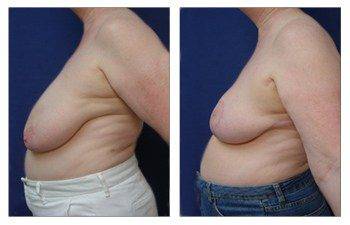
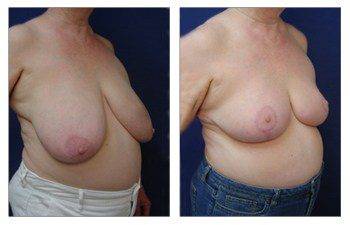
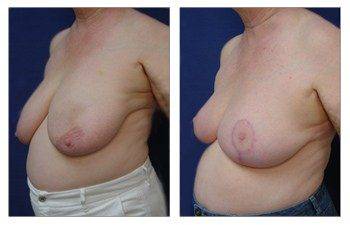

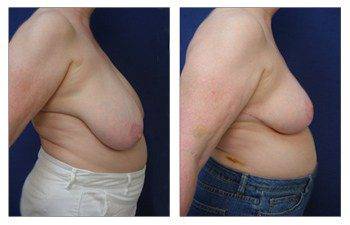

Download SurgiSculpt’s free Liposuction eBook
Introduction: Where are breast lift scars
A breast lift scar is one of the biggest concerns for patients researching breast lift surgeries. A breast lift, or mastopexy, is a plastic surgery procedure that aims to raise sagging breasts.
It is performed by removing excess breast skin while bringing the breast tissue up onto the chest mound and sewing the skin around the breast tissue.
Due to folding the breast tissue on top of itself, the final breast appearance may look bigger even without an implant. However, if you desire a significant increase in volume, a breast lift can be accompanied with an implant augmentation as well. There are three major techniques when performing breast lifts and all result in different scars.
Breast Lift Scars
A mastopexy can be performed with a donut lift (Benelli), a traditional breast lift (T Weiss pattern), or a vertical breast lift. The donut lift results in a limited scar around the nipple-areolar region.
However, this design severely limits the surgeon’s capacity to lift the breast and provides suboptimal shapes and sizes. The traditional breast lift has 3 major incision sites around the areola, vertically down the breast to the inframammary crease, and along the inframammary fold.
This allows the elimination of significant breast skin redundancy. Unfortunately, this technique does not allow for simultaneous implant augmentation. The vertical mastopexy creates the anchor-shaped incision seen in this patient.
The advantage of this is that it allows for a greater lift than the donut lift while also allowing for simultaneous implant augmentation. SurgiSculpt has developed a modified vertical breast lift technique with an inverted T Weiss pattern to relieve the incision lines of some tension and facilitate ideal breast lift scar healing.
Regardless of which breast lift surgery you choose, there will be a visible scar. Nevertheless, a breast lift can result in a beautiful breast transformation that enhances your quality of life.
Breast Lift Scars: A Comprehensive Guide
Breast lift surgery, known medically as mastopexy, is a transformative procedure that offers women the chance to rejuvenate and reshape their breasts. As with any surgical procedure, scarring is a natural part of the healing process. However, the location, size, and appearance of these scars can vary based on the surgical technique used. This guide aims to provide an in-depth understanding of breast lift scars, the different surgical approaches, and how to care for them post-operatively.
The Art and Science of Breast Lifts
Breast lift procedures are both an art and a science. The primary goal is to achieve a youthful and aesthetically pleasing breast shape while minimizing visible scarring. The challenge lies in balancing the desired lift and shape with the inevitable scars that result from incisions.
Understanding Different Breast Lift Techniques
There are several breast lift techniques, each with its own unique incision pattern. The choice of technique often depends on the patient’s breast size, shape, and desired outcome.
Circumareolar Lift
Also known as the “doughnut” lift, this technique involves an incision made around the areola. The resulting scar lies at the edge of the areola, making it relatively discreet. This method is suitable for women who require a mild lift.
Vertical Breast Lift
This approach, often referred to as the “lollipop” lift, involves an incision around the areola that extends vertically down the breast, resembling a lollipop shape. It allows for more significant reshaping and lifting than the circumareolar method.
Anchor Lift
The traditional or “anchor” lift involves three incisions: one around the areola, another vertically down the breast, and a third along the breast crease. This technique is ideal for women with more considerable sagging and offers the most dramatic lift.
Factors Influencing Scar Appearance
Several factors can influence the appearance and healing of scars post-breast lift surgery:
Surgical Technique
As discussed, the choice of breast lift technique determines the location and size of the incisions, which in turn affects scarring.
Skin Type and Genetics
Some individuals are genetically predisposed to develop more noticeable scars, such as keloids or hypertrophic scars.
Post-Operative Care
Proper wound care, avoiding sun exposure, and following the surgeon’s post-operative instructions can significantly influence scar healing and appearance.
Minimizing and Caring for Breast Lift Scars
While scars are a natural outcome of surgery, there are steps patients can take to minimize their appearance:
Silicone Gel Sheets
Silicone gel sheets can be placed over the scars to help flatten and fade them. They work by hydrating the skin and promoting balanced collagen production.
Scar Creams and Ointments
There are numerous over-the-counter and prescription creams designed to improve scar appearance. Ingredients like silicone, vitamin E, and onion extract can be beneficial.
Sun Protection
UV exposure can darken scars, making them more noticeable. It’s crucial to protect scars from the sun by using sunscreen or protective clothing.
Laser Treatments
For scars that are raised or discolored, laser treatments can be an effective solution. Lasers can reduce redness, improve texture, and promote a more even skin tone.
Conclusion: Where are breast lift scars?
While it’s natural to be concerned about scarring, it’s essential to view breast lift surgery in its entirety. The procedure offers a chance to achieve perky, youthful breasts, boosting confidence and self-esteem. Scars fade over time, but the positive effects of the surgery last much longer.
For those considering a breast lift, it’s crucial to consult with a board-certified plastic surgeon. They can provide insights into the best surgical approach, expected outcomes, and post-operative care to ensure optimal results.
This 57 years old female following large breast lift procedure to improve nipple-areola sagging and reduction of breast cup size from DD to C.
